The celebrated Mr. K pays a VETERANS DAY SALUTE…

By PAUL KUPPERBERG
It took me a while to come around to war comics. Coming of (draft) age during the closing days of the mess in Vietnam, I was vehemently antiwar and, as a consequence, anti-war comics. When DC Comics started slapping a “Make War No More” blurb at the end of the war stories they published between 1968 and 1972 I dashed off a fanzine article decrying the corporate hypocrisy of having their cake by seeming to take an antiwar stand and eating it too by continuing to publish war comics.

That label was, I later came to learn, neither a cynical company move nor an act of hypocrisy. “Make War No More” was a stamp put on titles like Our Army At War, Star-Spangled War Stories, and Our Fighting Forces by editor (and frequent writer and/or artist) Joe Kubert.
“I wanted to make it clear that, despite the fact that I was editing war books, we were not glorifying war,” Kubert was quoted as saying in a 2014 Huffpost.com obituary, and when I was finally old enough to see beneath the surface events of those stories to the gritty subtext, I understood where “Make War No More” was coming from. These weren’t superheroes in khaki (well, except maybe for Sgt. Fury). They were soldiers, even if only 15 or 20 years after the end of World War II, the American Joe’s once feared adversary, the Nazis, had been reduced to banality by overuse and cliché in every other movie, TV show, thriller, and comic book story, or turned into punchlines in Hogan’s Heroes, Rowan and Martin’s Laugh-In (“Very interesting… but stupid!”), and The Producers.
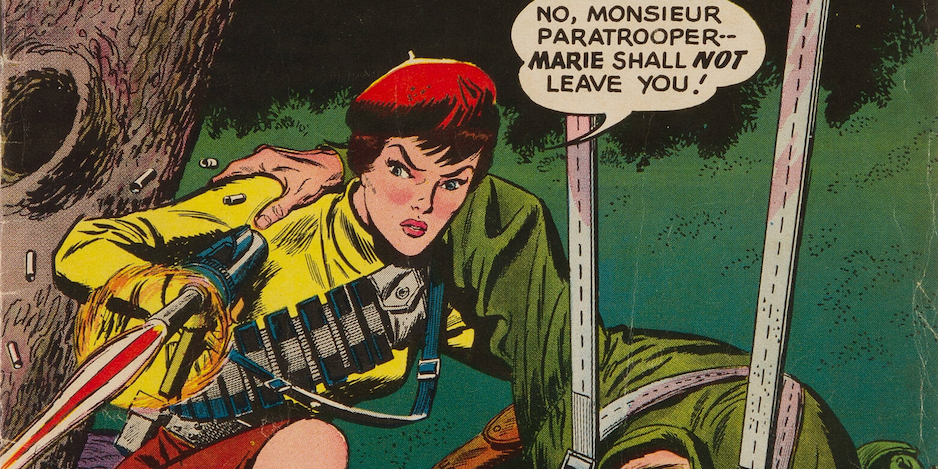
But DC’s war comics never treated Nazis like a joke, and while World War II was the setting for a majority of their war features, shallow and cliché weren’t tools in Joe Kubert’s kit. They could be part and parcel of many a story by Joe’s frequent collaborator, Robert Kanigher, but the writer also found an astonishing number of fresh and innovative approaches to telling the same old story: War is hell. And for every ill-advised Kanigher script like “I Am Curious (Black)!” (Superman’s Girl Friend, Lois Lane #106, November 1970), he was capable of great stories like “What is the Color of Your Blood” (Our Army at War #160, November 1965) or “Eyes for a Blind Gunner” (Our Army at War #113, December 1961).
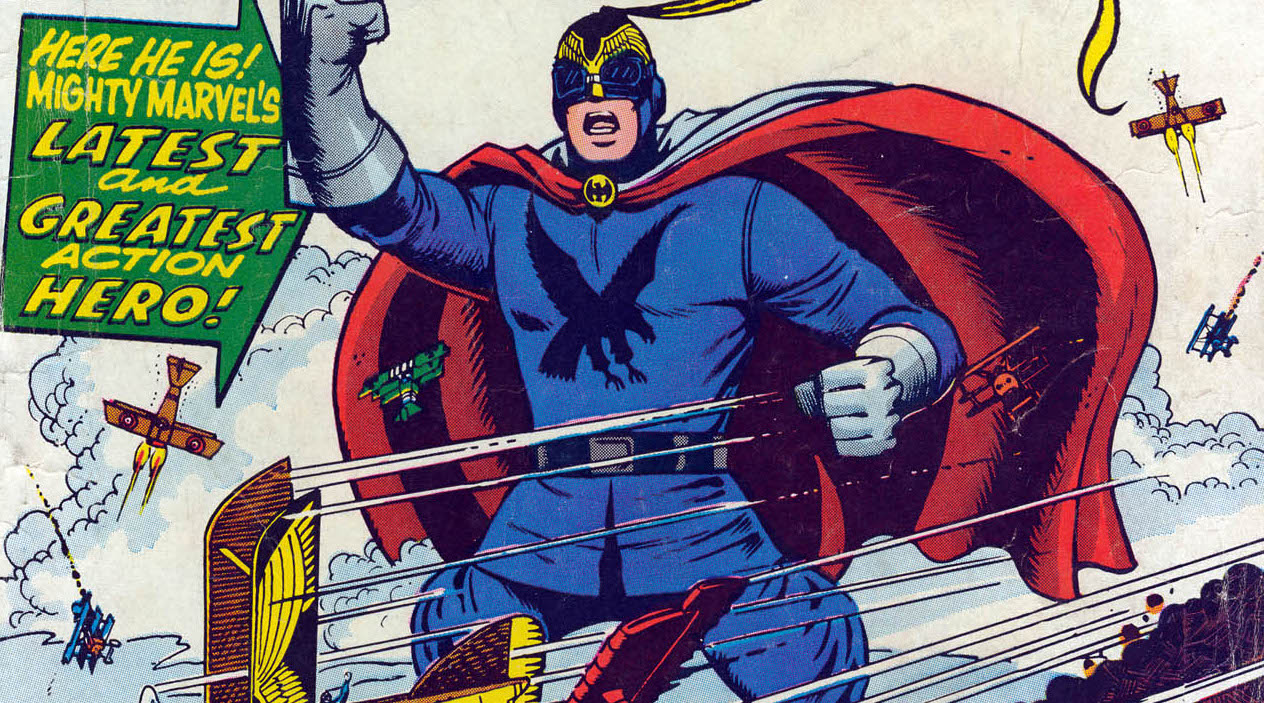
DC seemed to have a lock on the war comics market in those days. Warren Publishing had a brief run at recreating the glory days of the classic EC war comics by Harvey Kurtzman and his crew, but Blazing Combat lasted only four (glorious!) issues, and, while Charlton may have published as many, if not more, war titles, theirs were anthologies that, with few exceptions (see No. 9, below), didn’t feature ongoing characters, and, more importantly, didn’t have creative giants like Kubert and Kanigher behind them, along with writer Bob Haney, and artists Ross Andru, Russ Heath, Jerry Grandenetti, Mort Drucker, Alex Toth, Sam Glanzman, Neal Adams, Gene Colan, and others. Without realizing it, I was living in a Golden Age of war comics!
Here then, MY 13 FAVORITE COMIC BOOK COMBAT HEROES — RANKED:
—
13. Combat Kelly and the Deadly Dozen (1972). Corporal Mike Kelly and his group of paroled convict soldiers was a latecomer to the combat comics, and a short lived one at that. Obviously influenced by the success of the 1967 movie The Dirty Dozen, Combat Kelly was created by Gary Friedrich and Dick Ayers for Marvel Comics…vor should I say recreated, as this was a rehash of the 44-issue Combat Kelly series (1951-57) set during the Korean War published by Marvel forerunner Atlas Comics.
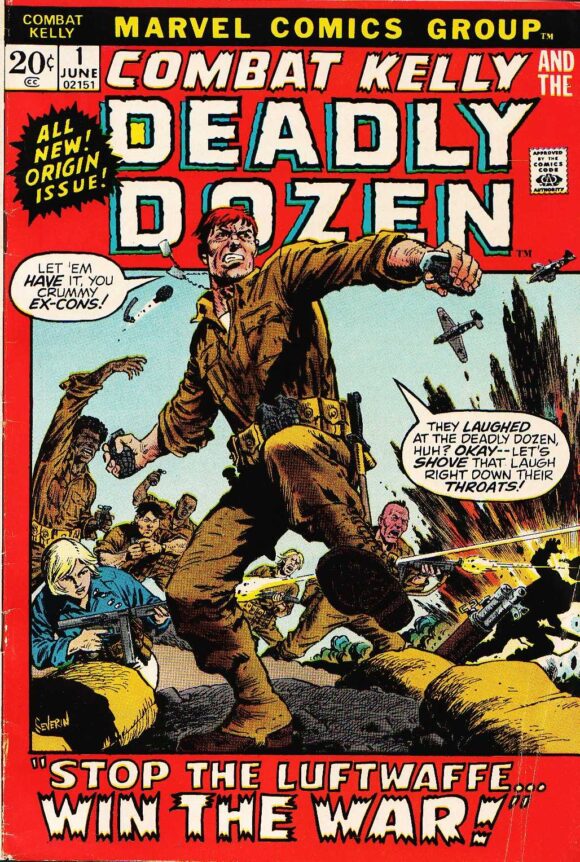
—
12. Blackhawk (1941). Is it a war comic? Adventure? Superhero? Whatever the team morphed into over its long history, it was originally created by Will Eisner, Chuck Cuidera, and Bob Powell as a war strip, literally in the pages of Military Comics #1, published by Quality Comics. From hot war to Cold War, from leather suits and jodhpurs to superhero costumes, from Quality Comics to DC Comics, the Blackhawks underwent any number of radical shifts and transformations but still managed to survive the newsstand superhero famine of the 1950s, and were popular enough to have appeared in a brief 1950 Blackhawk radio series on ABC and a 1952 Columbia Pictures movie serial starring Kirk (Superman) Alyn.
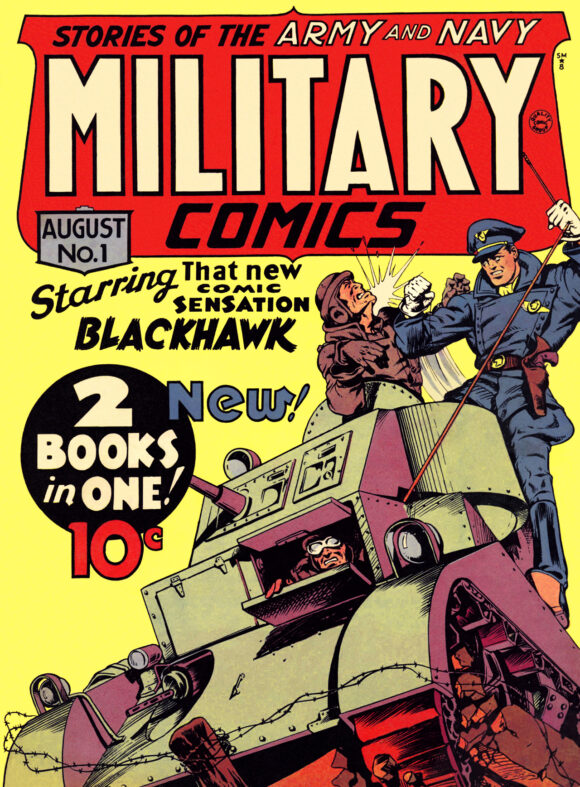
—
11. Steve Savage, the Balloon Buster (1965). It’s not easy to make an aerial dogfight exciting on the static printed page, but it can be done in the hands of the right creators, which was the case with this World War I strip that debuted in All-American Men of War #112 (November/December 1965). The creators were writer Robert Kanigher and artist Russ Heath, and Savage was a rural farm boy with an attitude and a grudge against German attack balloons.
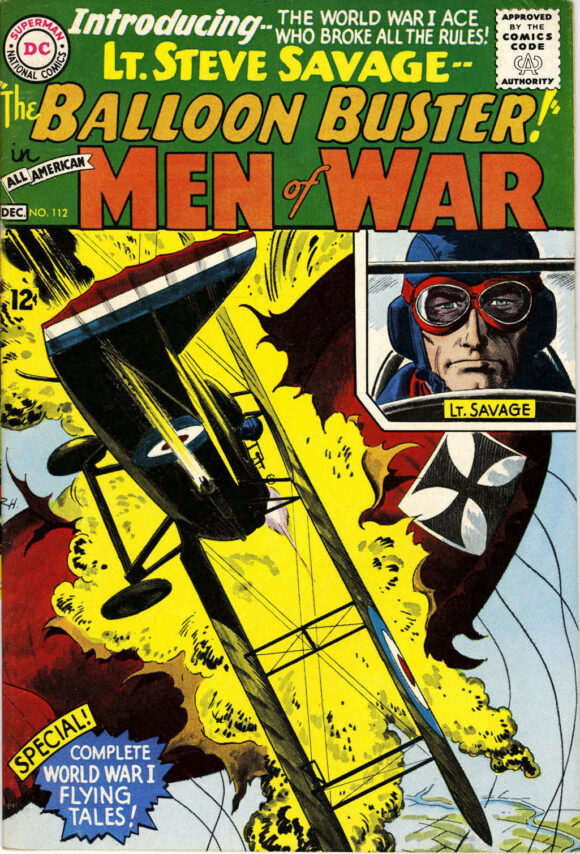
—
10. Sgt. Fury and His Howling Commandos (1963). It sounds weird to call one war comic “more muscular” than others, but Jack Kirby and Stan Lee’s Sgt. Fury and His Howling Commandos seemed to me to amp up the testosterone level of even a feature as raw as DC’s Sgt. Rock. Under the pen of a gritty artist like Kubert, the Combat Happy Joes of Easy Company were down in the mud while Fury’s Howlers, members of the elite First Attack Squad, seemed to hurtle above the grimier aspects of war thanks to Kirby’s superheroic dynamism.
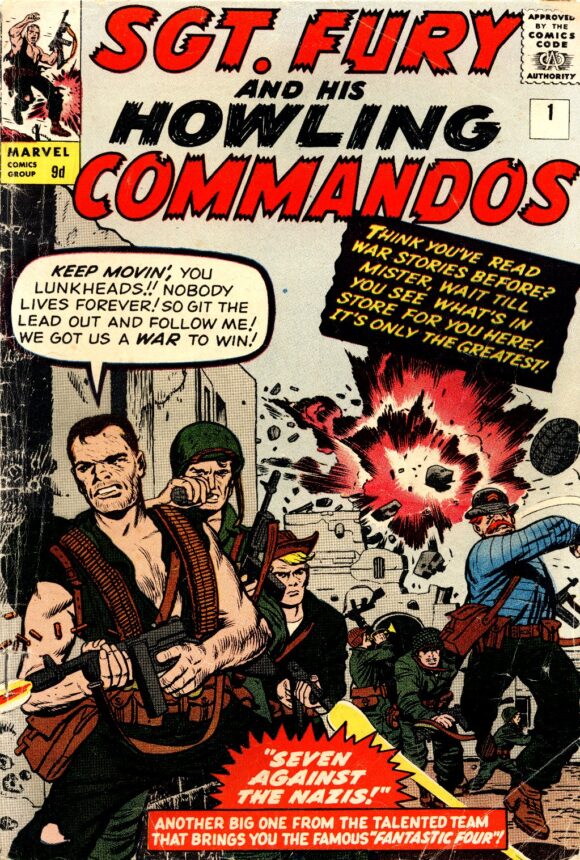
—
9. The Lonely War of Capt. Willy Schultz (1967). This creation of then 16-year-old writer Will Franz and artist Sam Glanzman snuck by me when it was originally published in Fightin’ Army #76 (October 1967), being as it was that rare standout Charlton Comics war feature mentioned above. The story of a German-American captain in the U.S. Army wrongly convicted of murder, the strip follows Willie Franz as he escapes and blends into the German army, trying to clear his name even as he struggles to stay loyal to America and his oath as a U.S. Army officer.
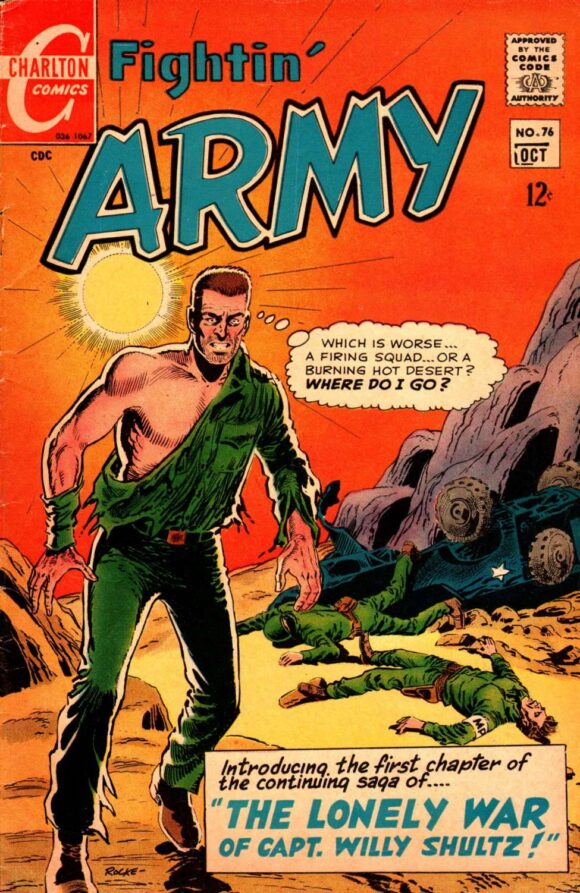
—
8. Gunner and Sarge (1959). It was a good, old fashion buddy story: two U.S. marines, a private called “Gunner” and a sergeant called, er…“Sarge,” alone on an occupied island somewhere in the Pacific during World War II, fighting the Japanese. Created by Kanigher and artist Jerry Grandenetti for Our Fighting Forces #45 (May 1959), the duo were later joined by a member of the K9 Corps called “Pooch.” No real names were given to protect the innocent.
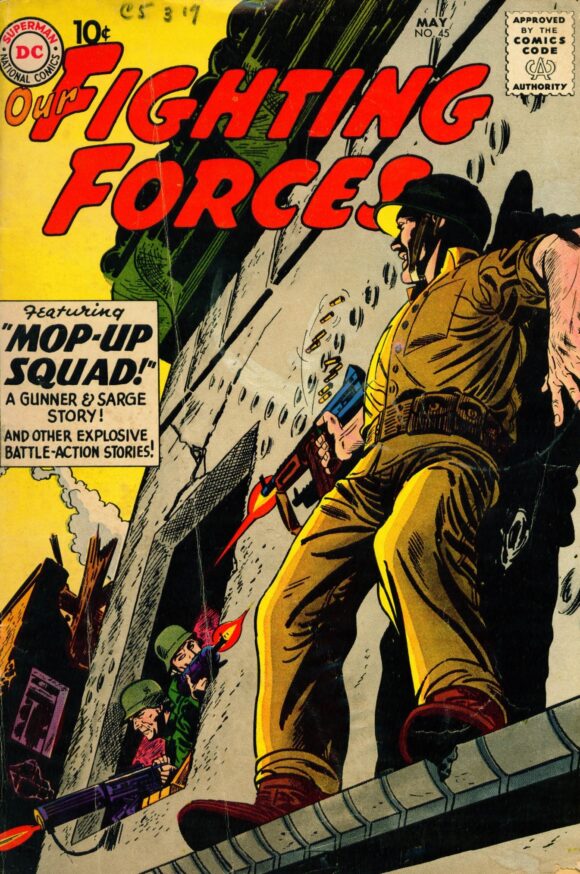
—
7. Jeb Stuart and the Haunted Tank (1961). From Kanigher and Heath in G.I. Combat #87 (May 1961), the ghost of Civil War Confederate General J.E.B. Stuart plays guardian angel to his 20th century namesake, Lt. Jeb Stuart and the crew of the M3 Stuart tank he commands. While it’s helpful to have a ghost to watch over you, Lt. Jeb was the only one who could see or hear the General, making his men think he’s nuts but who continue to follow him because he’s a talented tactician thanks to the advice he gets from a ghost they think he hears because he’s nuts.
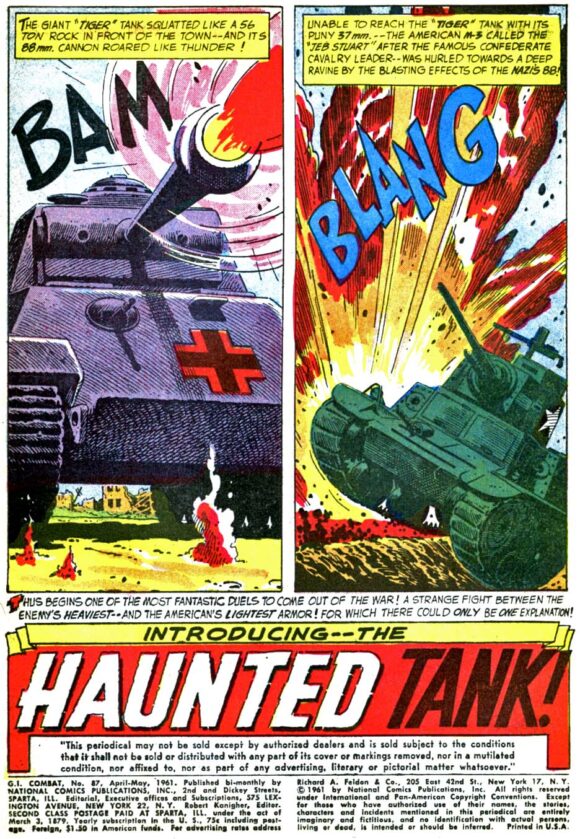
—
6. Johnny Cloud (1960). There was a whole lot of language in Johnny Cloud, Navajo Ace, created by Kanigher and Irv Novick for All-American Men of War #82 (December 1960) that would be problematic today, but the feature was a hard look at the prejudices faced by a Native American pilot in the Army Air Corps of WWII.
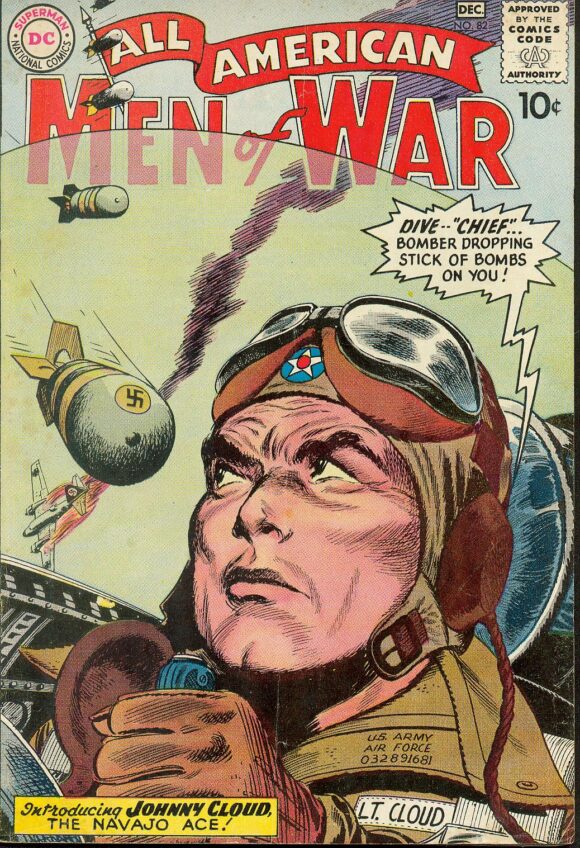
—
5. Mademoiselle Marie (1959). The American military services were well represented in the war comics of the day, making French Resistance fighter Mademoiselle Marie (first appearing in Star Spangled War Stories #84, August 1959) a rare bird indeed. A creation of Kanigher and Grandenetti, Marie was as tough as they came, using machine guns, her feminine wiles, and everything in between to rid France of its Nazi occupiers.
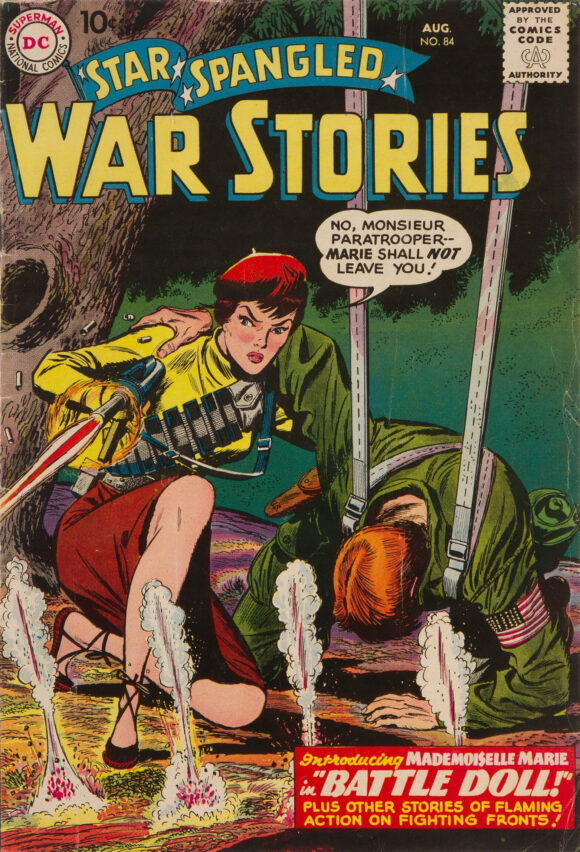
—
4. Enemy Ace (1965). Maybe DC’s greatest aviation strip, by DC’s greatest war comics creator team, Kanigher and Kubert, Hans von Hammer clicked his heels and made his debut in Our Army at War #151 (February 1965) before beginning a long run in Star Spangled War Stories. It was a radical look at war from the “other” side, as seen through the eyes of the conflicted von Hammer, a chivalrous flying knight in the morally gray arena of war.
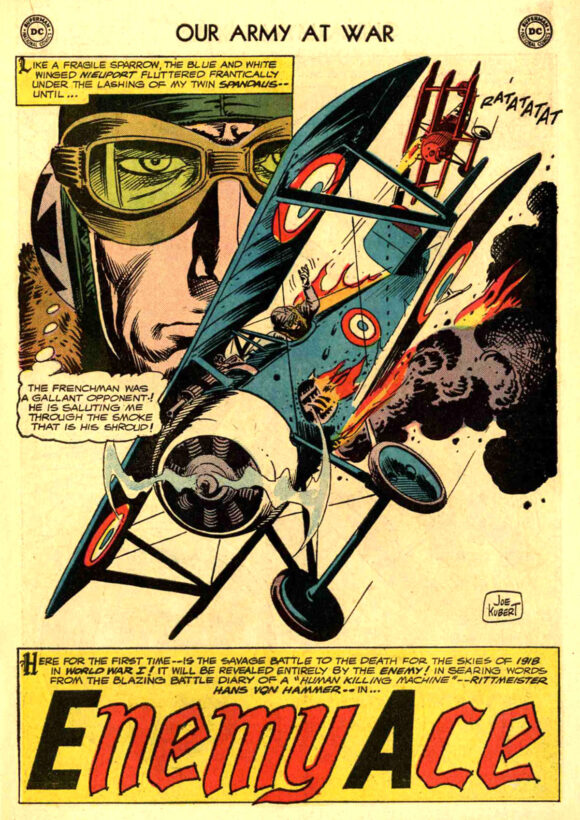
—
3. The Phantom Eagle (1968). This was my first time seeing the art of Herb Trimpe and I can’t think of a better introduction! The creation of Gary Friedrich and Trimpe for Marvel Super-Heroes #16 (September 1968), the Phantom Eagle is Karl Kaufmann, a skilled American stunt pilot who adopts a “secret identity” to protect his German parents from reprisal when he joins the fight against the Central Powers in World War I. The character made a few later appearances in Marvel titles like The Incredible Hulk, Ghost Rider, and The Invaders, but I prefer to let that first story, with Trimpe’s stunning scenes of dizzying aerial combat, stand on its own.
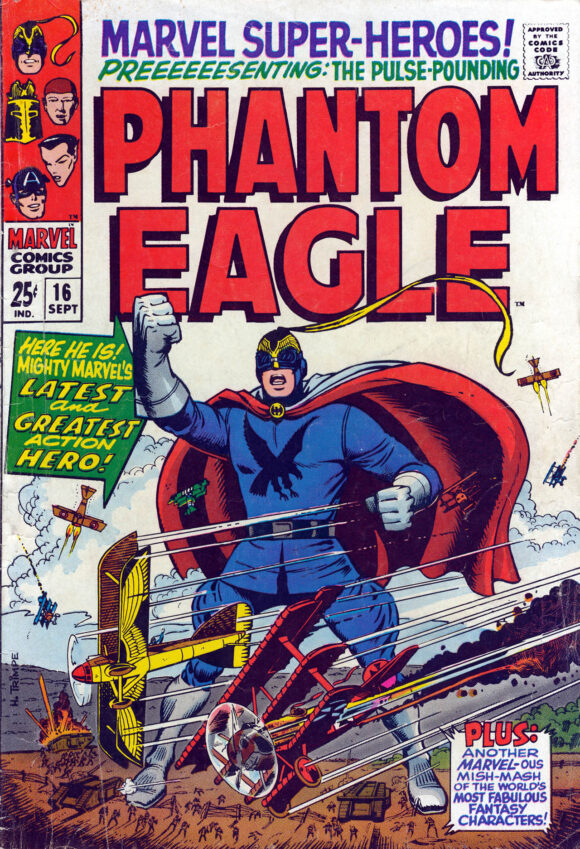
—
2. Sgt. Rock (1959). The official debut of the man called “Sgt. Rock,” leader of those Combat Happy Joes of Easy Company, was in Our Army at War #81 (April 1959) in a story by Kanigher and Kubert, but a predecessor prototype of the man referred to only as “The Rock” had appeared in G.I. Combat #68 (January 1959) in a story by Kanigher, Ross Andru, and Mike Esposito. Set in the concrete realism of war, Kubert’s and later Heath’s, art on the strip was always gritty and gripping, and was only edged out of my Number One Comics Combat Hero spot by a likely unexpected usurper…
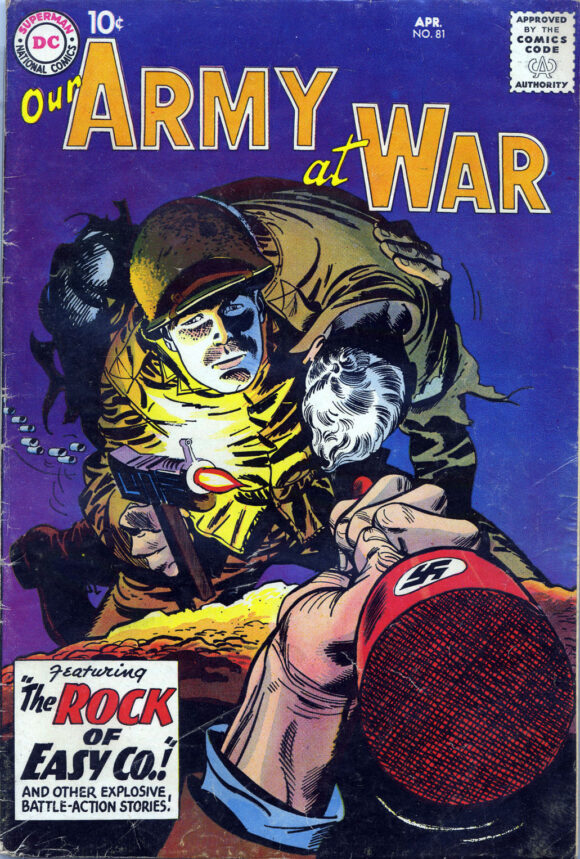
—
1. P.T. Boat Skipper Captain Storm (1964). I caught this short-lived series — 18 issues between May/June 1964 and March/April 1967 — entirely in the 10¢ back issue bins of My Friends Bookstore in Brooklyn a couple of years after it had been cancelled, and fell in love with it. Written by Kanigher (no doubt inspired by the 1963 movie P.T. 109 based on the World War II Pacific Theater exploits of President John F. Kennedy), with art by Irv Novick, P.T. boat skipper William Storm loses his boat, crew and his left leg in combat with the enemy. Learning to walk again with a wooden leg and overcoming the odds and opposition from all quarters, Storm is given a new command and a chance, like Captain Ahab and Moby Dick, to hunt down his own white whale, the Japanese captain who sunk his ship and killed his crew.
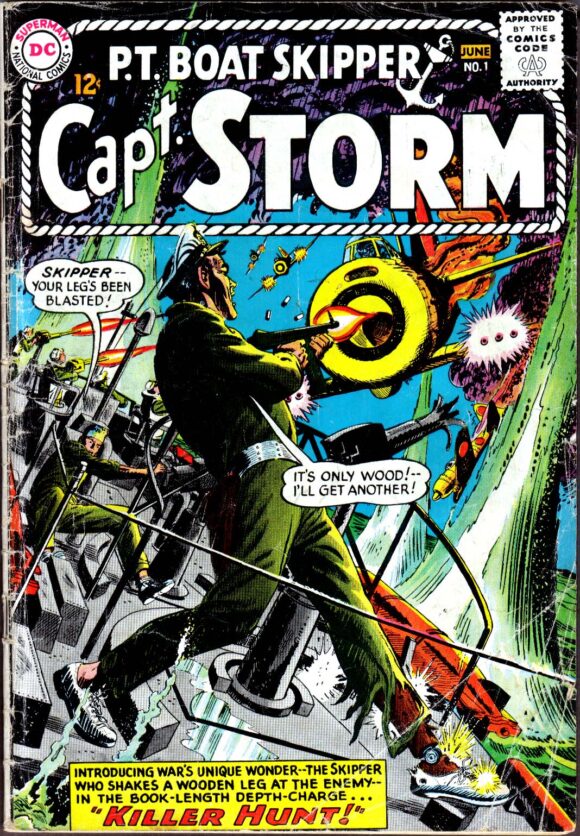
—
MORE
— REVEALED! The Brave Veterans Who Beat the REAL MARTIAN INVASION of 1938. Click here.
— VETERANS DAY: The Fabulous ARMY MAGAZINE Art of WILL EISNER and MURPHY ANDERSON. Click here.
—
PAUL KUPPERBERG was a Silver Age fan who grew up to become a Bronze Age comic book creator, writer of Superman, the Doom Patrol, and Green Lantern, creator of Arion Lord of Atlantis, Checkmate, and Takion, and slayer of Aquababy, Archie, and Vigilante. He is the Harvey and Eisner Award nominated writer of Archie Comics’ Life with Archie, and his YA novel Kevin was nominated for a GLAAD media award and won a Scribe Award from the IAMTW. He also wrote an essay for DC’s Aquaman: 80 Years of the King of the Seven Seas. Check out his new memoir, Panel by Panel: My Comic Book Life.
Website: https://www.paulkupperberg.net/
Shop: https://www.paulkupperberg.net/shop-1
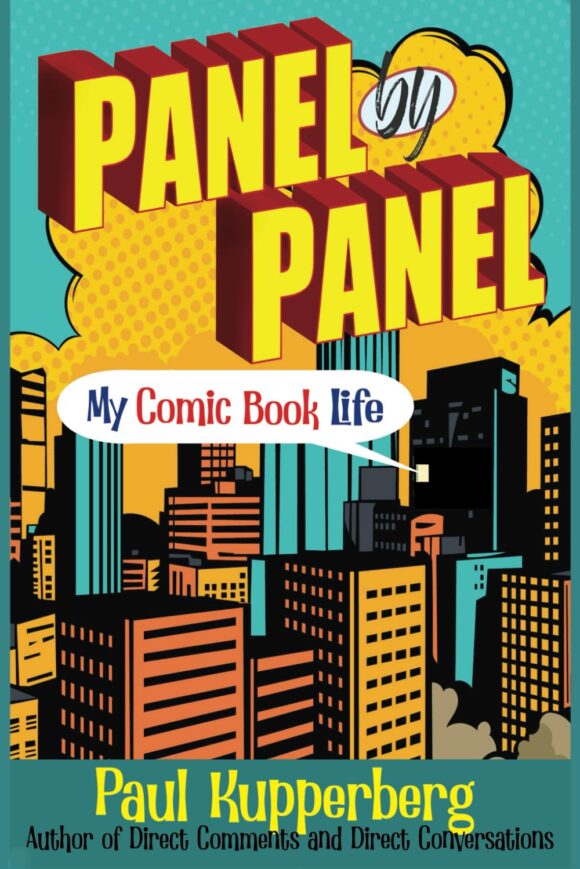

November 11, 2024
Great list.
My favorite was Enemy Ace…followed by Blackhawk, Mademoiselle Marie, and The Haunted Tank.
I would love to see DC’s Finest give us character specific collections from their war comics…particularly Mademoiselle Marie, which has never been collected in any form (as far as I know) and original issues are quite expensive
November 11, 2024
I’m hoping for DC Finest collections of the Unknown Soldier and the 1980s Blackhawk by Mark Evanier and Dan Spiegle.
November 11, 2024
I know he was on the Other Side; but I was also a fan of Hans von Hammer, the Enemy Ace
November 11, 2024
If thet do a DC’s Finest war edition, they should include Dateline: Frontline.
November 11, 2024
And Codename: Gravedigger too!